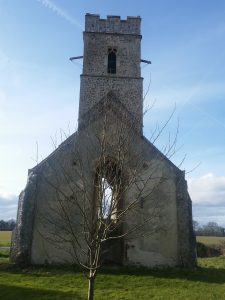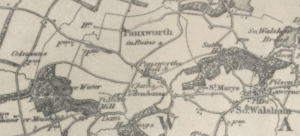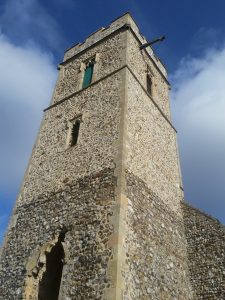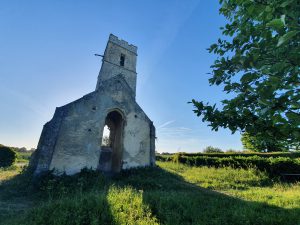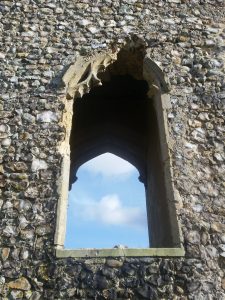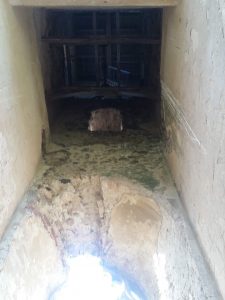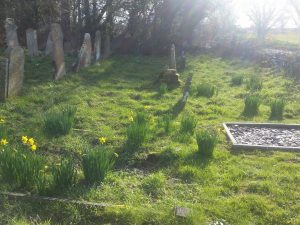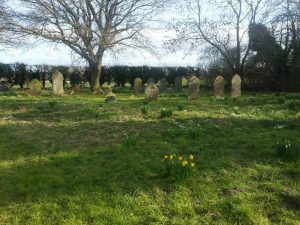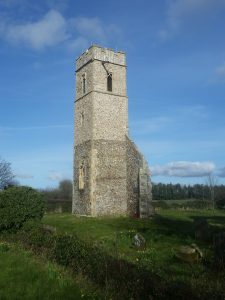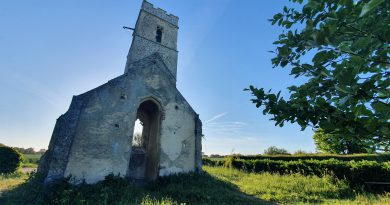Panxworth – All Saints Church
This is one of my favourite churches in Norfolk, or at least, what’s left of it.
The church was originally built in the fourteenth century, but as can be seen from this 1826 map, at this stage the church was in ruins (it’s located on the map just after the word ruins, at the little cross). It’s notable that there’s nothing else around there in terms of residential properties, the community had literally moved on. It’s not known when the church fell into ruins, but it was probably around the sixteenth century, which would coincide with depopulation in the area.
However, the Victorians in a surge of confidence about church-going spent a fair sum of money on bringing the building back into use. An article in the Norfolk Chronicle in September 1845 noted that £500 was needed to complete the project and the local landowners made a donation, and there were events held including a “fancy fair”. At the fair there were “drawings on the tables of the intended design, with the building in the style of the fourteenth century, with a nave and chancel”.
The project (there’s a plan from 1846 here) was overseen by James Weston and he didn’t really do much work to the tower itself, just tidying the structure up and adding a new nave. This plan worked for a while, with the church remaining in use until 1959 and it was finally declared as redundant in 1976. As usual, the wonderful George Plunkett has a photo of the church as it looked in the 1970s.
Rather than repair the nave, which by the 1980s was becoming in need of some attention, they knocked it down, which wasn’t a huge historical loss as it was a Victorian structure anyway. So, in 1981, the nave and the south porch were taken down. As if that wasn’t enough for the church, a lightning strike hit the tower in 2005, which required more repair work.
A damaged window frame, but this looks original from the fourteenth century (the frame, not the damage).
Inside the church tower.
The churchyard, where the graves are still tended.
And there’s the tower, standing somewhat adrift in the landscape. Over recent years there have been rumours that the site has been used for Satanic worship and for a while the site was closed off. Fortunately, the structure is now accessible again for visiting and I think it still looks elegant. I do though still feel sorry for those Victorian donors, who contributed money to make it an operating church once again, but instead it’s come to this.


